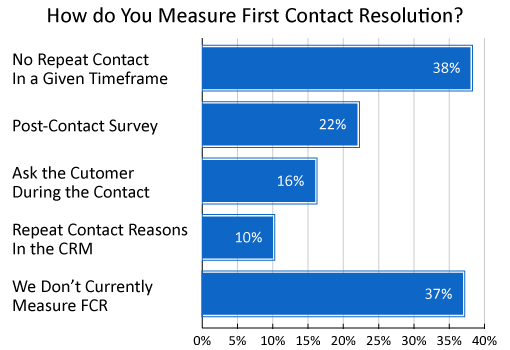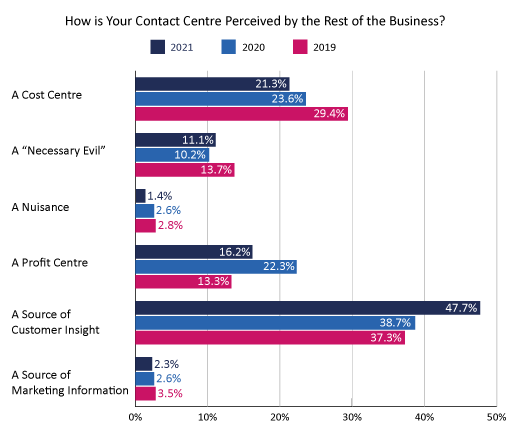When a customer reaches out to your contact centre, the ideal outcome is a swift, seamless resolution – no callbacks, no follow-ups. But achieving that consistently, across every channel and query type, is easier said than done.
As the pressure to improve both efficiency and experience mounts, many contact centres are turning their focus to a crucial metric – First Contact Resolution.
In this article, we define what First Contact Resolution (FCR) is, how to measure it, challenges to using the metric and best practices to boost FCR rates in your contact centre.
What is First Contact Resolution? – A Definition
First Contact Resolution (FCR) is a core contact centre metric that tracks the percentage of customer issues resolved during the initial interaction, without requiring any further follow-up from either the customer or the advisor.
It applies across all communication channels, including phone, email, live chat, and social media. Achieving high FCR means the contact centre is effectively meeting customer needs right the first time, minimising effort for both the customer and the business.
The term is also often referred to as Right First Time (RFT).
What is the Difference Between First Contact Resolution and First Call Resolution?
First CONTACT Resolution is a metric that is often confused with First CALL Resolution, which goes by the same acronym.
While both measure the same thing, First Contact Resolution does so across every contact centre channel, while First Call Resolution (also known as One-Call Resolution) is for phone calls only.
Why is First Contact Resolution Important?
First Contact Resolution is now seen by many as the best measure of contact centre efficiency, as fewer organizations use talk time as a measure to target advisors on. This is because it can encourage negative behaviours, as advisors may start rushing off the phone.
So organizations are turning to FCR to assess not only the efficiency of advisors but also the processes and technology behind them.
In fact, if you use FCR in combination with Average Handling Time (AHT), and split the metrics across your most common contact reasons, you can highlight your most inefficient customer journeys – a topic that we will revisit later.
How to Calculate First Contact Resolution
The traditional formula for FCR is highlighted below, but the trouble comes with how you source the data to enter into this calculation.
The FCR Formula
First Contact Resolution FCR (%) = Total Contacts Resolved on First Contact ÷ Total Contacts × 100.

While the calculation is straightforward, how do we know that a contact has truly been resolved? How can we track that?
We could ask advisors to confirm on the contact whether it has been resolved or not. But that could encourage negative behaviours or customers might realize sometime after that something is not quite right with the resolution – despite previously saying that they were happy with it.
So, maybe we can track repeat calls over a certain time period. But will the window be long enough? And perhaps the customer will be calling for a different reason?
These two methods are therefore not true methods of calculating FCR.
A better method of calculating FCR is to send the customer a summary of the interaction a few days after the initial contact. If the customer is not happy and the case is not “truly resolved”, they can reopen the case and FCR can be tracked in that way.
For more on calculating First Contact Resolution, read our article: How to Calculate First Contact Resolution
Is First Contact Resolution the Right Metric for Your Organization?
While First Contact Resolution is becoming more prevalent in the contact centre “metric mix”, it isn’t going to be your only measure and it will sit alongside all of your other requirements to delivering good customer service.
This can make things tricky, as managers, leaders and even advisors have so many different priorities that they are juggling to get right.
There are no other business environments that are measured more tightly than the contact centre. But we need to remember that just because we can measure something, that doesn’t mean that we should be measuring it.
“Every six months, contact centres should consider the metrics that they’re measuring, why are they doing it and does the metric fit with the goals of the wider organization,” says Nerys Corfield, Director of Injection Consulting.
If everybody in your contact centre management team can’t answer why you are measuring First Contact Resolution and the metric isn’t aligned behind that goal, it might not be the right metric for you.
Also, there are occasions where we want customers to call again, so maybe we should just be targeting FCR across different contact reasons.
For example, if the customer calls to book a test drive of an expensive car, we want that customer to call again or we may want to make an outbound call to them.
There are lots of scenarios like this where FCR doesn’t have a place, so just be careful of when it is and isn’t appropriate to measure FCR.
What is a Good First Contact Resolution Rate?
We often hear of industry standards for FCR, usually around the 65-75% mark. So anything above 75% is a good rate of FCR, right?
Not necessarily, as we cannot compare our FCR rates with those of other organizations when our processes, people and technology are completely different.
Maybe we have great self-service systems in place, which customers love, meaning that we only get those really tricky contacts.
This means that our FCR rate is going to be lower than a competitor with no self-service at all, which still has customers phoning in for transactional contacts. But it doesn’t mean that they are doing a better job than us.
So not only will FCR rates vary significantly from one industry to another, they will vary greatly within certain sectors too.
Especially if each contact centre is measuring FCR in a different way – whether that is through asking customers directly, post-contact surveys or repeat contacts.
Take a look at the video snippet below, taken from a recent Call Centre Helper webinar, in which Nerys explains the industry-standard rate for FCR.
With this in mind, we should only be using internal benchmarks for FCR – using external benchmarks will only serve to waste time.
For more on using internal and external benchmarks, read our article: Contact Centre Benchmarking – How to Get More From Your Metrics
3 Common Mistakes When Using FCR in the Contact Centre
We now know the danger of externally benchmarking FCR, so here are three more common mistakes in applying the metric to the contact centre.
1. Don’t Confuse First Contact Resolution With Repeat Contacts
In a recent poll of more than 130 contact centre professionals, we found that the most common method of measuring FCR was to track repeat contacts within a given timeframe, as highlighted below.

But we need to revisit a point made earlier in this article; FCR and repeat contacts are different metrics. While repeat contacts give you an indication, measuring FCR in this way will give you a distorted view, as the customer could be contacting you about a different matter entirely.
However, this doesn’t mean that measuring repeat contacts as a separate metric doesn’t have its value. Doing so can provide great insight into the effectiveness of your call routing and clarity of messaging.
For more on this key distinction, read our article: The Difference Between Measuring Repeat Contacts and First Contact Resolution
2. Don’t Chase the First Contact Resolution Score
In the contact centre, you have your operational metrics, advisor metrics and your customer experience metrics. FCR is a customer experience metric.
Why? Because it gives you an outside-in perspective of what is going on, how you are performing against customer expectations, not against your own.
From this, you can see that there is a key balancing act going on, and if you chase after an FCR score, without thinking about how this impacts advisors and your operations, you could cause problems down the line.
It’s all about understanding the root cause and what is driving people to make the contact in the first place. What is driving a lack of ability to deliver the answer first time when that’s appropriate?
So, we need to remember that while we can calculate a number, we need to have an understanding of why that is our score, before implementing FCR improvement strategies that are not relevant to our operation. If we just rush into improving FCR, we may also discover some unintentional consequences…
3. Don’t Measure First Contact Resolution in Isolation
If you’ve got 90% FCR rates and that’s because most of the time, when somebody contacts you, they ask, “can you tell me when my insurance renewal is due?” – and you can easily answer that question, does that make you a good contact centre?
Does making the customer pick up the phone to ask that question make you a good organization? No.
With this in mind, we may find that measuring FCR without a Customer Satisfaction (CSat) measure running alongside that is problematic. We need other stats to give us a clearer picture as a whole.
This is according to Nerys, who makes the comparison to measuring service level in isolation, saying:
“Some contact centres target SLAs of 95/5, but the unintended consequence is that call transfers are going here, there and everywhere, while occupancy goes through the roof and so on.”
Best Practices for Improving First Contact Resolution
Sure, there are lots of quick tips for improving FCR, but we want to understand our root causes, so we make the best possible changes to our contact centre, which will then be reflected in an improved FCR result.
To do this, we want to make changes to the three key contact centre areas: processes, people and technology – ensuring that changes in one area don’t negatively impact another.
Processes
There are two key points here: the first is spotting what might be damaging FCR stats and the second is identifying where miscommunication is causing problems.
Determine Repeat Contact Drivers
Identifying what our repeat drivers are should be the key focus in any exercise that we develop to improve FCR.
A good starting point for this is to assess how customers are using our IVR. This is because IVR selection can be hugely problematic, with so many people pressing “1” regardless of their query.
So let’s assess how customers are using the IVR and gain an understanding of what we can do better to ensure that the customer is passed through to the most appropriate advisor.
Then, we can think about how we use call disposition codes within the CRM. Do advisors know why they’re expected to enter a call disposition 70 times a day? If not, and they have to scroll through a disposition list of 40 options in a limited call-wrap time, we could run into problems.
Once we’ve simplified these basics, talk to the team, ask why customers were calling yesterday. What do they think the business could do to stop that contact? They will help you to uncover root causes within your processes that are causing FCR.
Of course, you could go one step further and use a speech analytics systems, but analysing how customers use the IVR, how advisors use call disposition codes and common customer frustrations is your starting point.
Identify Where Clear Communication Will Help
Let’s take an example of a common repeat contact driver, such as “where is my order?” Then we want to think about how we can create a business case around it.
The business case will ideally be organization-wide, including polite messages to Marketing to improve their communication, perhaps through proactive messaging, so we can better manage expectations.
Next, if the customer does call in and we have to refer to another part of the organization, like the warehouse or the driver, to understand where that parcel is, then – where it is safe to do so – let’s use some instant messaging and unified communication. This will prevent us from giving callbacks or putting customers on hold – improving FCR.
So, this is a key scenario of how we can use clear, proactive and unified communication to simplify our process maps, in the interest of resolving contacts at the first time of asking.
People
If you don’t get the investment in the right things and if the rest of the back office don’t listen to the contact centre, FCR is not going to be delivered effectively.
We need to be educating the rest of the organization on the importance of the contact centre, so that the rest of the business appreciates the importance of the job advisors do.
This can be a tricky task, particularly if you work for one of the 21.3% of organizations that view the contact centre as a “cost centre” – according to our research.

However, if we can do that and obtain budget for increasing advisor empowerment so team members have a greater influence over what they are talking about, we can be more confident of achieving FCR.
“Remember that it’s painful being an advisor on a call and not knowing the answer to a customer, especially when that customer is experiencing high levels of anxiety and emotion,” adds Nerys.
So, if we can better manage our existing resources and manage to get more from the wider business, we can give advisors the right training and tools to lower FCR in the most customer-friendly way.
Technology
While we discussed how voice analytics can benefit your organization through identifying common core repeat contact drivers, there are other technologies that can deliver improved FCR.
For example, take the unified queue. If we have every contact coming into the same interface, instead of having silos that make channel shift difficult, the advisor can resolve a contact that moves across different devices in one go.
So, with the universal queue, we want to take on an omnichannel approach to digital customer service.
But while many contact centres may think they are operating in an omnichannel space, many of those are actually using multichannel.

The difference is that with omnichannel you can handle all communication – through each digital and voice channel – within the same interface. Customers can therefore move from one channel to another and all that context and history follows them, giving the advisor more information to best handle their next contact.
With this example in mind, it is not only analytics that can drive FCR from a technological standpoint. Choosing technologies that also help to make the advisor’s job easier will likely support FCR improvement, even if that’s not your key aim.
Other technologies that make things easier for advisors include: a well-managed knowledge base, smart desktops, noise-cancelling headsets and many more.
For further information on creating an omnichannel strategy, read our article: How to Create an Effective Digital Customer Service Strategy
For more on other key customer experience metrics, read our articles:
- 10 Metrics to Help You Measure the Customer Experience
- How to Get More From Your Customer Satisfaction (CSat) Scores
- Call Centre Quality Parameters: Creating the Ideal Scorecard and Metric
Author: Charlie Mitchell
Reviewed by: Robyn Coppell
Published On: 3rd Feb 2020 - Last modified: 18th Aug 2025
Read more about - Call Centre Management, First Contact Resolution (FCR), Key Performance Indicators (KPIs), Management Strategies, Metrics, Nerys Corfield








































